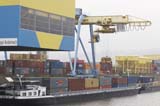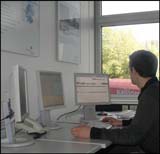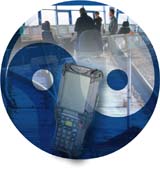With the disappearance of trade barriers and the increase in transport efficiency, the globalization of the world economy is leading to a further sharp rise in transport volumes, which poses growing challenges for both seaport and hinterland logistics. Further major increases in volume and transport distances are to be expected in the coming years. Bottlenecks can already be seen approaching in all areas of traffic.
Having said that, there are reserve capacities in rail goods traffic, and its impact on the environment and the climate is low. The decisive factor in the shift to these modes of transport is the fulfillment of the logistical requirements of shipping agents and providers of logistics services. Fraunhofer Rail offers the planning of rail goods traffic concepts tailored to the individual requirements of logistics providers, process optimization in rail transport including prior and subsequent activities, and integration in modern information and communication systems.
 Fraunhofer-Allianz Verkehr
Fraunhofer-Allianz Verkehr

